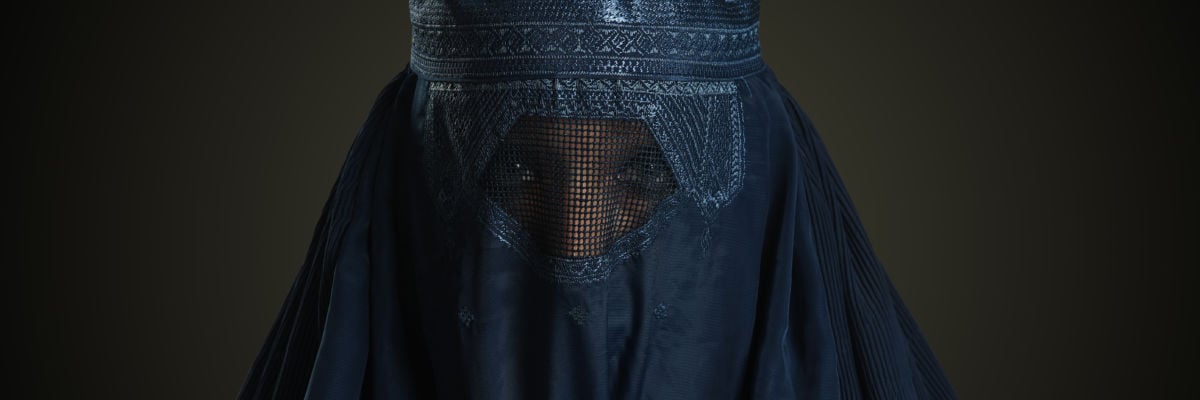
Many think it rhetorically clever to undermine Christianity by comparing it with one if its greatest religious rivals: Islam. NPR once provocatively asked: “Is the Bible More Violent Than the Quran?” Philip Jenkins, then-professor at Penn State University, responded in the affirmative: “The Islamic scriptures in the Quran were actually far less bloody and less violent than those in the Bible.” Christians violently oppressed religious dissidents, claimed a 2016 article at Foreign Policy, and the Crusades showed that Christians could be just as bloodthirsty as Muslims.
One hears the same thing regarding the two religions’ treatment of women. Washington Post contributor Sally Quinn in an interview with NPR argued that Islam and Christianity both use modesty to oppress women. “If the woman covers herself up completely, that means, in a way, she’s owned by the man,” declared Quinn. “And there’s no other way to look at it, except that it’s subservience.” A feminist tract published by a national non-profit contends, “There are more than 200 bible verses that specifically belittle and demean women.”
Are such accusations accurate? When it comes to violence and treatment of women, are Christianity and Islam more or less the same? And does that similarity undermine the Christian witness by exposing that it can be just as violent and misogynist as Islam?
Before we even try to engage those questions, we need to take a step back and consider the (very problematic) premises underlying the argument. How does one even evaluate what a religion is at its core? For many, the answer is to look at the religion’s sacred texts. But there’s an immediate problem there: how do we know we are interpreting those texts accurately, and how do we go about determining if those texts meet some threshold that enables us to stamp them violent, misogynist, or anything else?
In truth, the presumption that we can simply open up a religion’s sacred texts and make broad-brush claims about that religion’s inherent nature is arrogant, anachronistic, and simplistic. And any indicators we establish for making those assessments will be ad hoc and arbitrary. “Oh, this book has thirty murders in it — it must be a violent religion!” “This book has some verses talking about women in a demeaning manner; it must be opposed to women’s rights!” You get the idea.
The problem is further compounded by the fact that religious traditions are not monolithic. Are we talking about Catholicism, Orthodoxy, Protestantism, or something else? Are we studying Sunni, Shia, or the Ibadi school of Islam? Which sect’s interpretation of its sacred texts will we decide is normative? Does the fact that most terrorist groups are Sunni mean that that part of Islam is the inherently more violent one? Trying to sort out these complicated distinctions suggests that perhaps it is not so easy to authoritatively answer such broad, arcane questions.
Thankfully, Catholics have intellectual tools that can bring some much-needed clarity. The first is the role of the Magisterium, an authoritative source for religious doctrine and Scriptural interpretation. So, for example, we read in the Catechism of the Catholic Church:
The legitimate defense of persons and societies is not an exception to the prohibition against the murder of the innocent that constitutes intentional killing. . . . It is legitimate to insist on respect for one’s own right to life. Someone who defends his life is not guilty of murder even if he is forced to deal his aggressor a lethal blow. . . . . Legitimate defense can be not only a right but a grave duty for one who is responsible for the lives of others. The defense of the common good requires that an unjust aggressor be rendered unable to cause harm (2263-2265).
In other words, whatever Bible verses or stories our interlocutor may present to us, we interpret them through the lens of authoritative, magisterial teaching that we must not take innocent life, and that killing is permissible only as a defensive measure.
But there’s more. As Catholics, we also believe that the teachings of our Church are in conformity with the realities of the natural law, and that the veracity of many of these teachings can be confirmed by human experience and logical reasoning. Thus, for example, we can perceive that women, by virtue of their physical composition and capacity for childbearing, are by nature more vulnerable than their male counterparts. Women, every human society has recognized, require protection from male aggressors who may abuse or rape them.
With those preliminary observations, we are now better able to address the charges made by those who portray Christian teachings on war or the role of women as no better or worse than Islam. As Catholics, we can apply both our magisterial and natural law “lenses” to questions of violence and misogyny to evaluate (and rebut) these common accusations.
As for violence, we know from Church teaching that the conditions under which it may be used are carefully circumscribed, and always to be fundamentally motivated by love. We defend our family against an intruder out of love for our family; we protect our nation out of a love of our neighbor. Indeed, we are morally obligated to act in such circumstances. Nevertheless, even then, we are prohibited from taking innocent life or acting cruelly. Thus, the Crusades, or any other Christian act of violence, can be evaluated based on whether or not the actors involved had a legitimate claim to commit violent acts as an act of love. (Judging this is well beyond the scope of this article, but has been handily addressed by other Catholic Answers contributors).
What about Catholic teaching on modesty? The Catechism teaches that purity and modesty are both tied up in temperance, a cardinal virtue identified even by the non-Christian ancients. We read,
Modesty protects the intimate center of the person. It means refusing to unveil what should remain hidden. It is ordered to chastity to whose sensitivity it bears witness. It guides how one looks at others and behaves toward them in conformity with the dignity of persons and their solidarity” (2521).
Modesty is aimed towards preserving, rather than vitiating the dignity of the human person. It is about respect and charity—both for the person exhibiting modesty and for the person who may be tempted to objectify the person who is immodest. And if we consider that women are by nature more vulnerable, rejecting modesty just because it has been abused by purity-culture zealots or misogynists would be deeply foolish.
In sum, the underlying foundational principle in Catholic teaching both on violence and modesty is charity, or love. How that compares to Muslim teaching on these two topics is harder to grasp, especially given that there is no corollary to the Magisterium in Islam. In Muslim thought, no principle exists by which to determine who, from the most radical extremist imam to the most liberal, Western-friendly Muslim academic, is the true authority on Quranic teaching.
That means there is no principled way for Muslims to repudiate those within their own religion who say the Quran justifies suicide bombings that kill innocent civilians or that women wear burkas. All any Muslim can appeal to are his own preferred extra-Quranic interpretations or scholars. That fact alone should give anyone pause who aims to equate Christianity and Islam.



